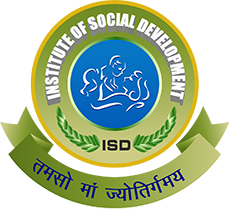Farmers Club Programe
Organisation for Economic Cooperation and Development (OECD), which defines it as “a combination of financial awareness, knowledge, skills, attitude and behaviours necessary to make sound financial decisions and ultimately achieve individual financial wellbeing.” Financial literacy is expected to impart the wherewithal to make ordinary individuals into informed and questioning users of financial services. It is not just about markets and investing, but also about saving, budgeting, financial planning, basics of banking and most importantly, about being “Financially Smart”.
The lack of basic knowledge about financial products and services and their risk-return framework is one common instance of financial illiteracy that is widely observed. The greed for higher returns eventually culminates into a crisis involving larger number of retail investors. This basic lesson holds true not just for an individual investing his hard earned savings in financial products, but also for a bank or financial institution that manages public funds and channels them, either as investments or loans. Thus, appreciation of various aspects of financial literacy and how it impacts our lives holds the key to prudent financial planning and welfare maximisation, both- at the individual level and for the society as a whole. Without financial literacy, we cannot expect to make major headway in either financial inclusion or consumer protection.
Financial inclusion, essentially, involves two elements, one of access and the other of awareness. . It is a global issue, and the relative emphasis on the two elements varies from country to country. For developed countries with widespread financial infrastructure, the access to financial products/services is not a matter of concern. It is more of a financial literacy issue in that market players/consumers are required to be educated about the characteristics of the available financial products/services, including their risks and returns. In developing countries like India, however, the access to products itself is lacking. Therefore, here, both the elements, i.e. access and awareness need to be emphasized, with improving access assuming greater priority. As already noted, financial literacy involves imparting knowledge about the risk and return of financial products to the users and providers of these products. It is this knowledge that helps in containing risks and maintaining stability in the financial system. A study by NCAER and Max New York Life has shown that in India, around 60 per cent of labourers surveyed stored cash at home, while borrowing from moneylenders at high interest rates; a pattern of saving money that is bound to aggravate financial vulnerability of these labourers.4 The process of educating these excluded sections would involve addressing deep entrenched behavioural and psychological factors that are major barriers to participating in the financial system.
The draft National Strategy for Financial Education (NSFE) for India has been prepared. NSFE document identifies certain simple messages such as why save; why invest; why insure; why save with banks; why borrow within limits; why repay loans in time; why borrow for income generating purposes, what is interest and how moneylenders charge very high interest rates, etc. The financial literacy and financial inclusion initiatives are complementary to each other and the absence of any one diminishes the effectiveness of the other.
NABARD has awarded ISD a Financial inclusion and Financial Literacy Programme in Udham Singh Nagar district of Uttarakhand focused on rural adults. The entire package has been designed to leverage on the existing infrastructure created and/or supported by Government of India and respective State Governments. This awareness programme is being implemented through Self Help Groups and Farmer Clubs.
Upcoming Events
30 th Jan 2019
Even today, there is lack of equality and bondage in the country. There is a lot of
30 th Jan 2019
Even today, there is lack of equality and bondage in the country. There is a lot of
30 th Jan 2019
Even today, there is lack of equality and bondage in the country. There is a lot of
